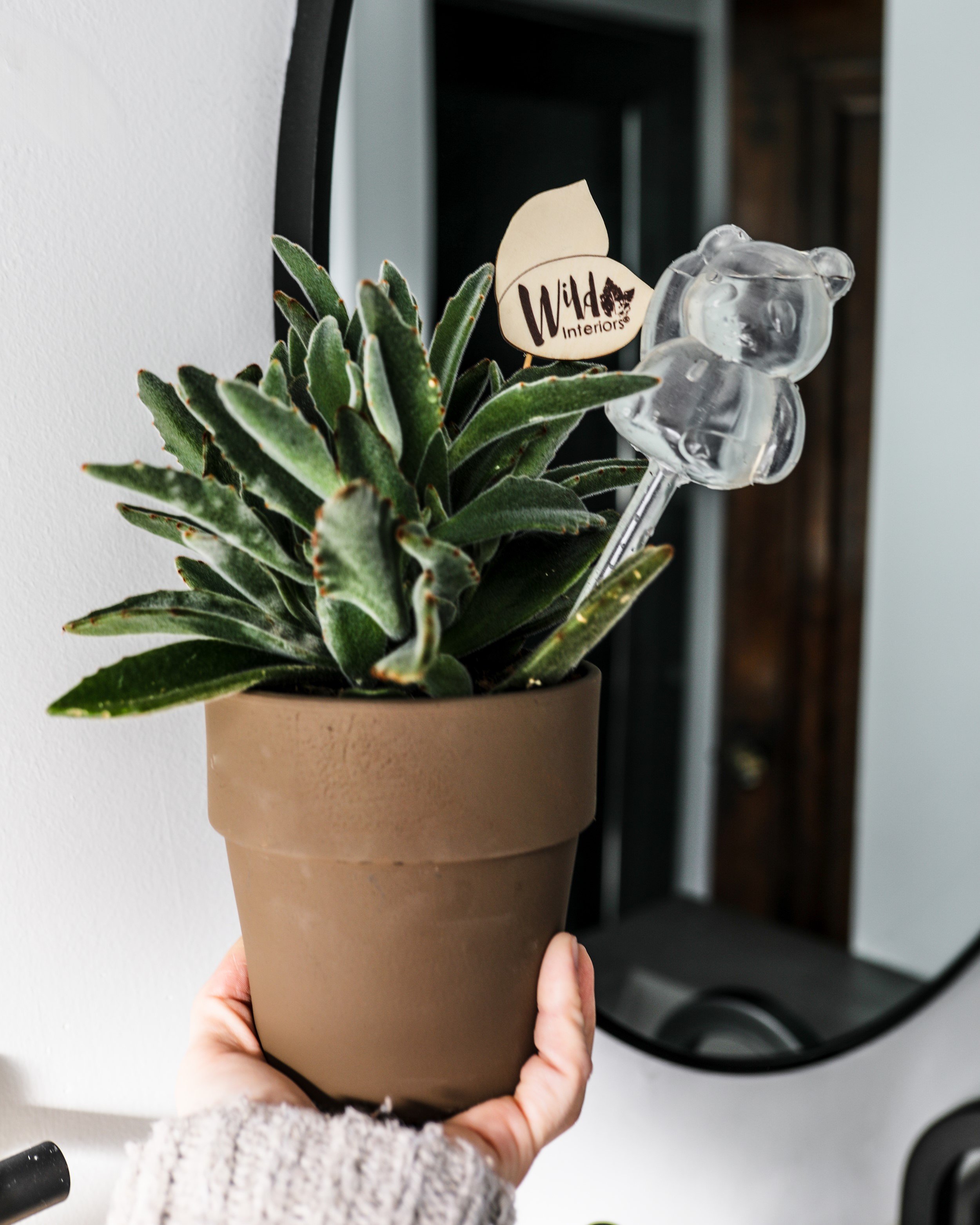How to Care for Panda Plant
With their low maintenance and water needs, succulents have long been houseplant favorites. Coming from exotic and interesting environments, succulents are some of the most strange-looking plants - just Google it! In this regard, the Panda Plant (Kalanchoe tomentosa) does not disappoint. This plant has tightly-packed, plump, ovate leaves that are covered in blue-grey hairs with rusty margins, making it stand out from the average succulent.
Why so fuzzy? Tomentosa means “covered in hairs” in Latin. The Panda Plant is a succulent native to the island of Madagascar. Plants from extreme environments have evolved some interesting characteristics to allow them to survive. One of these is trichomes or the tiny hairs you see on Panda Plants. These hairs protect the soft leaves from intense sun rays by deflecting light. These hairs also reduce the amount of water lost by the plant through transpiration.
How to Care for a Panda Plant
Light Exposure
Like most succulents, the Panda Plant will do best in medium to bright light. One major sign that succulents are not in bright enough light is etiolation. That is, the plants will stretch toward the light and the space in between their leaves (called the internode) will get longer. Since many succulents and cacti that you find in stores are grown in greenhouses, they may not be suited for direct sunlight and can actually get sunburned. A bright windowsill will do for the Panda Plant, especially in an east-facing window or slightly away from a south- or west-facing window.
Water & Media Type
It is a lot easier to overwater a Panda Plant than underwater. Panda Plants, and all succulents and cacti, should always be planted in a fast-draining soil like a cactus and succulent mix in a pot with a drainage hole. Allow the soil to dry in between waterings. When soil is completely dry, it may not hold onto water immediately, so continue to pour water over the soil until it begins to absorb water fully. Watering deeply like this will also prevent dry pockets in the soil and encourage the plant to grow deeper roots. When watering a Panda Plant, be sure to avoid dampening the leaves, as the hairs will hold onto moisture and can lead to mildew or other pathogens. You can also avoid getting water on the leaves by bottom watering.
Another way to tell that succulents are ready for water is by feel. A day or so after you water your Panda Plant, give the leaves a light squeeze. They should feel firm, full of water. Continue to check the leaves over the next month, taking note of how the firmness changes further from your last watering. When succulents start to wrinkle, or “pucker,” they are telling you “water, please!” Take care not to wait too long, as the lowest leaves will dry up and fall off when they are without water.
Fertilization
In general, succulents do not need as much fertilizer as most houseplants. These species were designed to survive in tough environments with little access to water and nutrients. In the springtime, the Panda Plant will benefit from a cactus and succulent fertilizer to encourage some new growth. We love this fertilizer for our succulents and cacti!
Temperature and Climate
Panda Plants will do best if they stay away from temperature extremes. They can ideally be kept at 60-75 degrees Fahrenheit, though minor temperature fluctuations should not be an issue. If you are bringing your Panda Plant outdoors during the summer, be sure to avoid placing it in very hot areas with direct sun. On the flip side, Panda Plants are not cold-hardy and should be brought indoors when the temperature drops. Keep in mind that the plant’s watering needs will change with the temperature!
There is no need to worry about supplementing your Panda Plant’s humidity. Panda Plants were made for dry areas and will do just fine with your home’s humidity. In fact, when left in an area that is too damp and with little air circulation, the Panda Plant is prone to powdery mildew.
Common Problems
The downside of this fuzziness is that Panda Plants are susceptible to powdery mildew. As we said earlier, be sure to keep it in a spot with plenty of airflow and avoid getting water on the leaves. Powdery mildew is treatable, though tricky to eradicate.
The Panda Plant can be a relatively low maintenance plant as long as you are keeping it in the appropriate environment, taking care not to overwater, and paying attention when it is telling you something is wrong. Crunchy leaves and cracking soil mean the soil needs a good soak. Mushy leaves and fungus gnats are telling you there is too much moisture and the roots may be rotting. Leaves that are turning brown and scabbed are getting too much light. A Panda Plant stretching towards a window needs more light.
Fuzzy in demeanor but tough as nails, a Panda Plant can make a great addition to your houseplant collection! An important note: the Panda Plant, like all members of the Kalanchoe family, is not a pet or kid-safe plant.
Looking for guidance on other plant care topics? Reach out to us @wild_interiors on Instagram or plantcare@wildinteriors.com.

